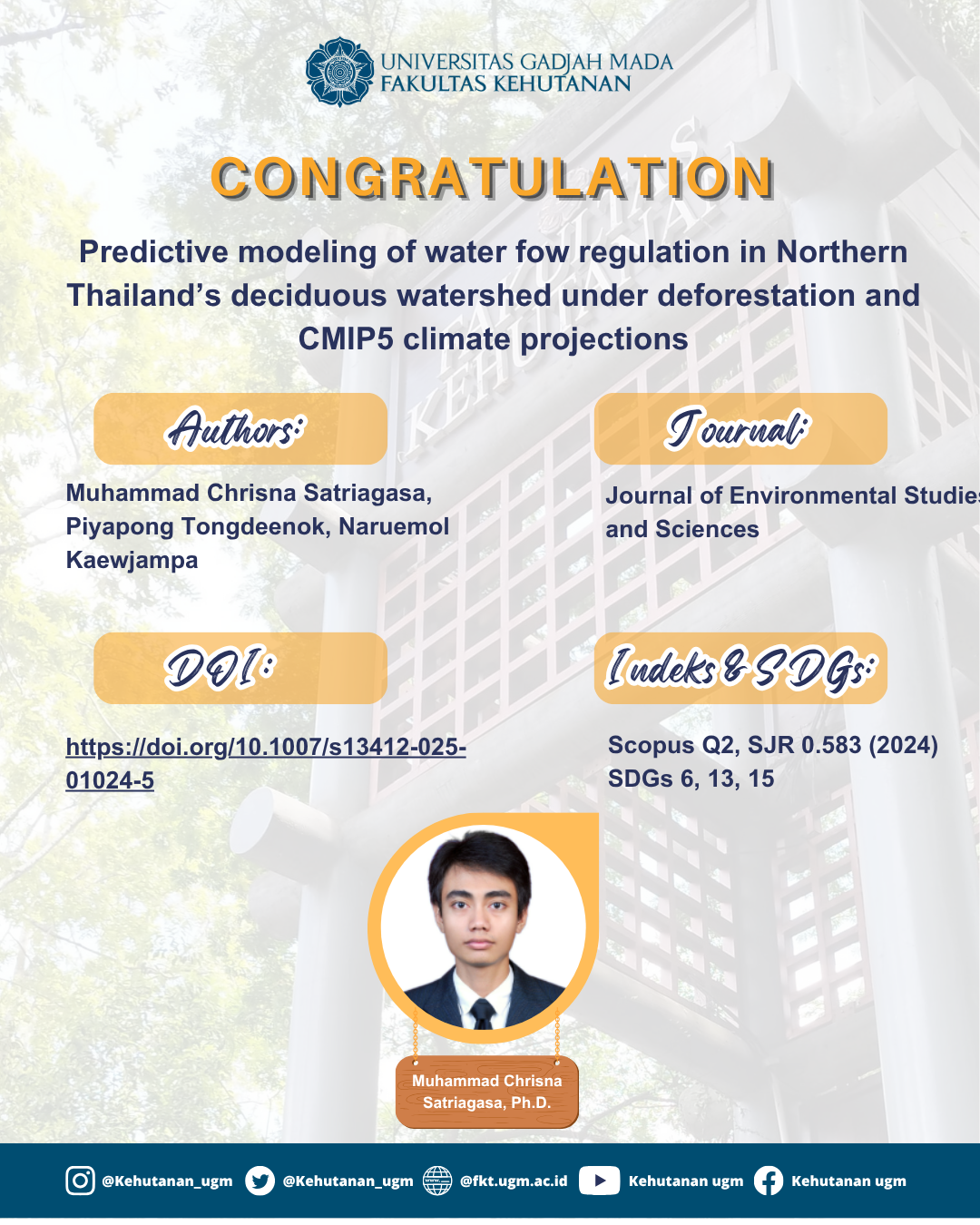
Abstract
This study investigates the effects of deforestation and climate change on water flow regulation within the mixed-deciduous-forest-dominated Upper Nan Watershed in Northern Thailand. Using the SWAT model, hydrological changes were analyzed under 16 land-use scenarios and CMIP5 climate projections (RCP4.5 and RCP8.5) for both historic (1980–2020) and future (2021–2080) periods. Findings reveal that increasing rainfall variability under RCP8.5 amplifies hydrological extremes, with peak flows rising and low flows dropping by up to 6.5% in pessimistic scenarios. In contrast, reforestation scenarios showed marked benefits, with low flows increasing by as much as 48.2% under RCP4.5, highlighting the stabilizing effect of forest cover on hydrology. If deforestation continues, by 2080, the watershed’s capacity to regulate water will significantly degrade, exacerbating flood and drought risks. The study underscores the necessity of incorporating long-term climate and land-use projections into adaptive watershed management. It advocates for reforestation and conservation initiatives as critical strategies to reduce hydrological risks and preserve ecosystem services. These findings provide policymakers with a robust foundation for implementing targeted interventions to enhance water security and resilience across Southeast Asia.
SDGs:
SDG 6: Clean Water and Sanitation
SDG 13: Climate Action
SDG 15: Life on Land
Link Dokumen:
Download
